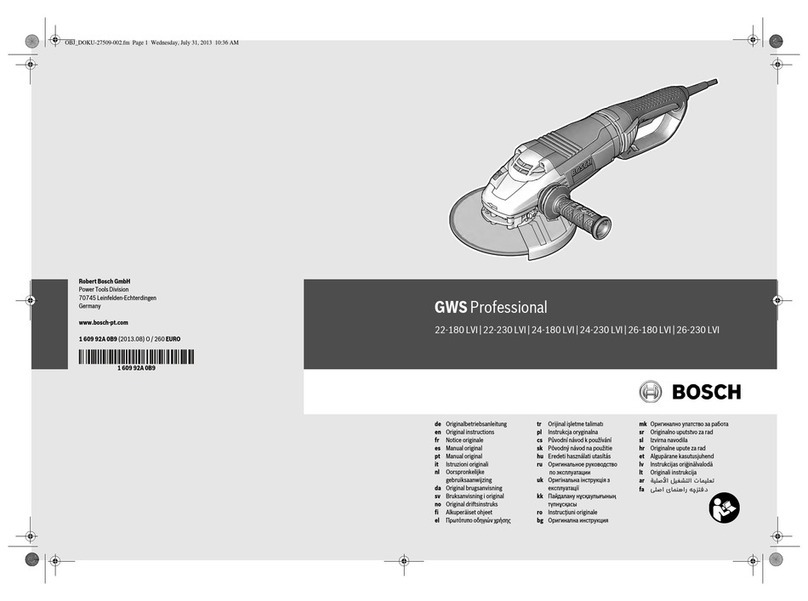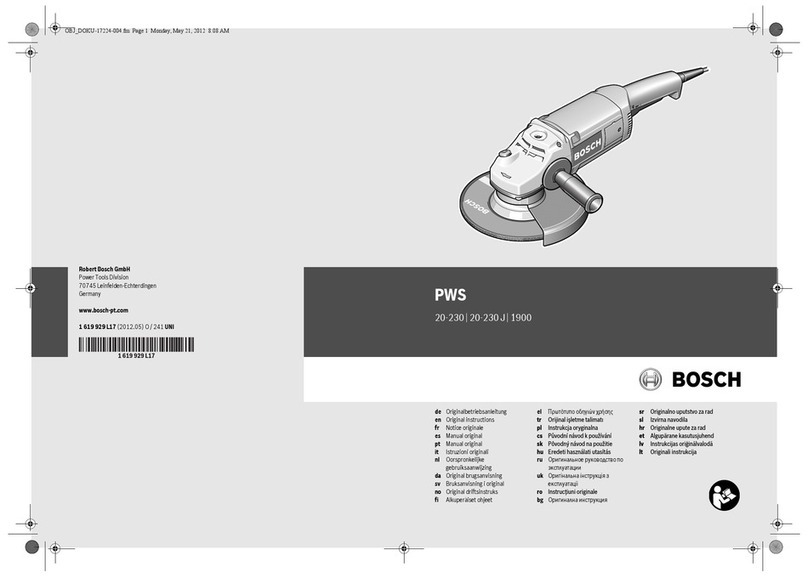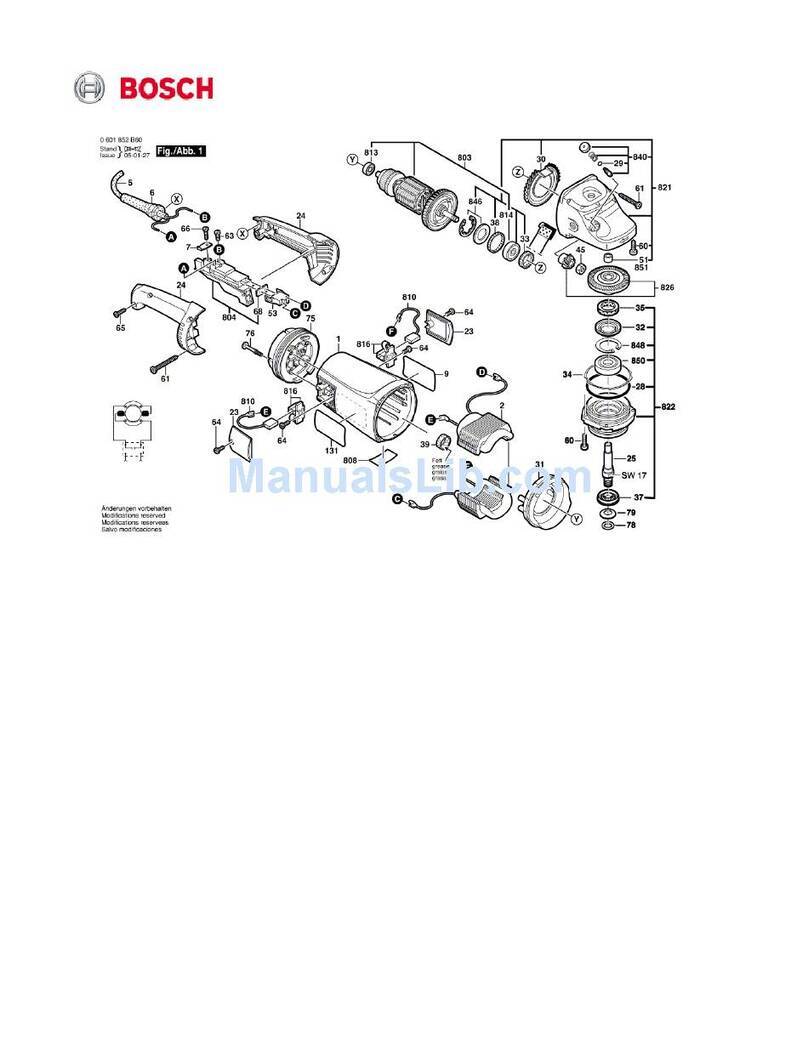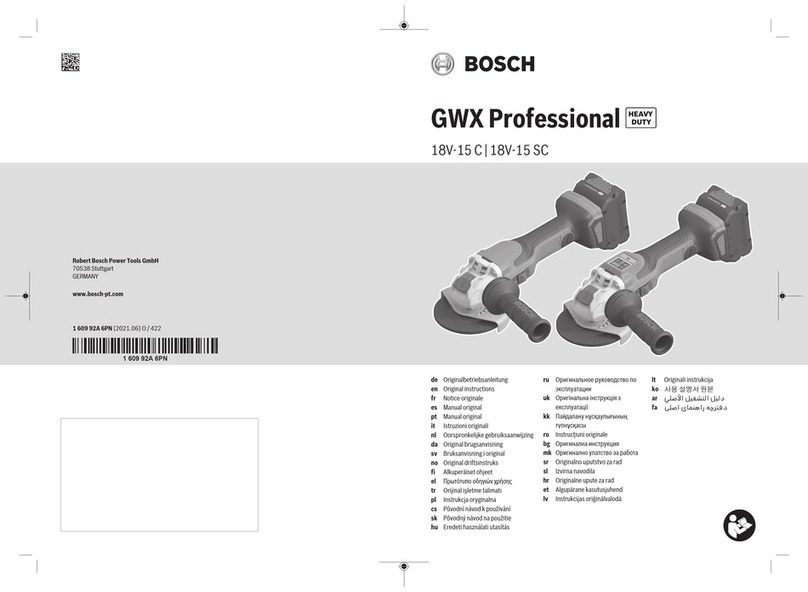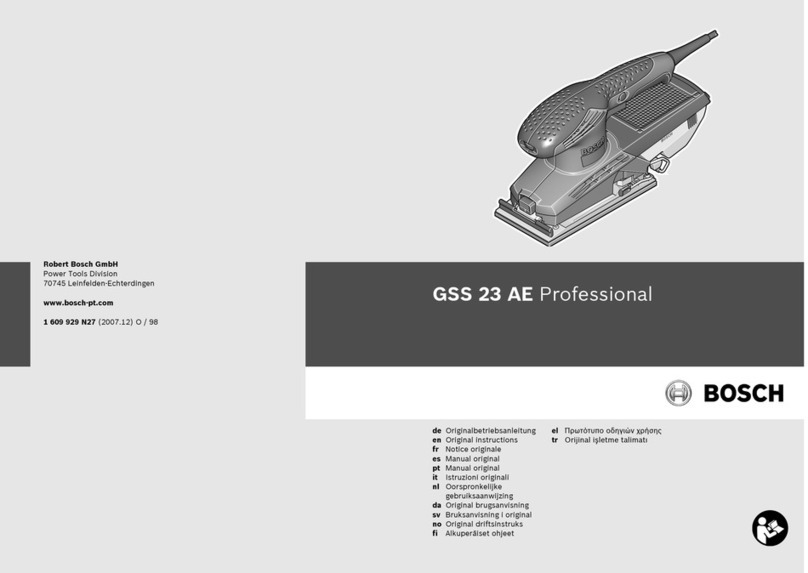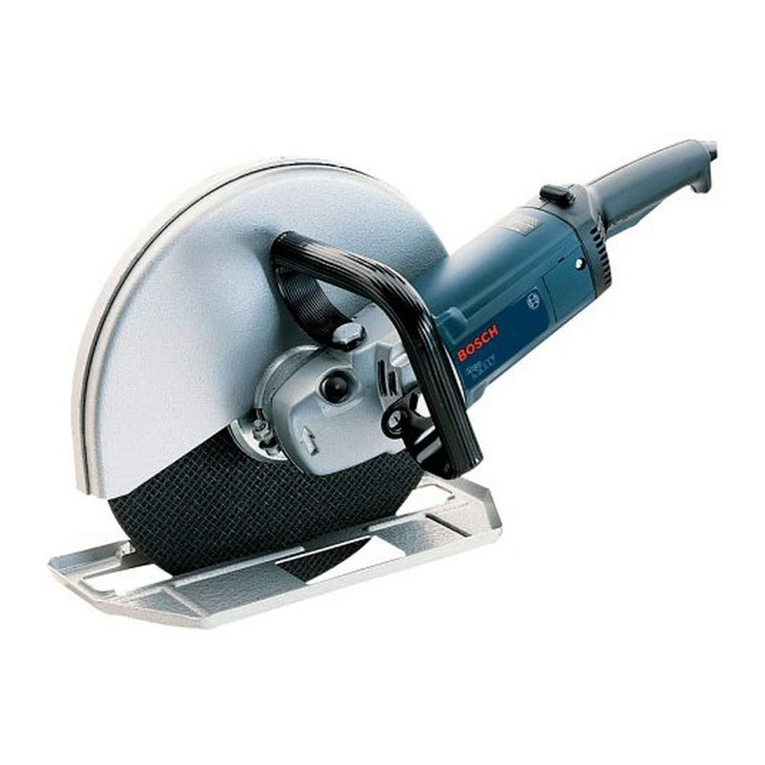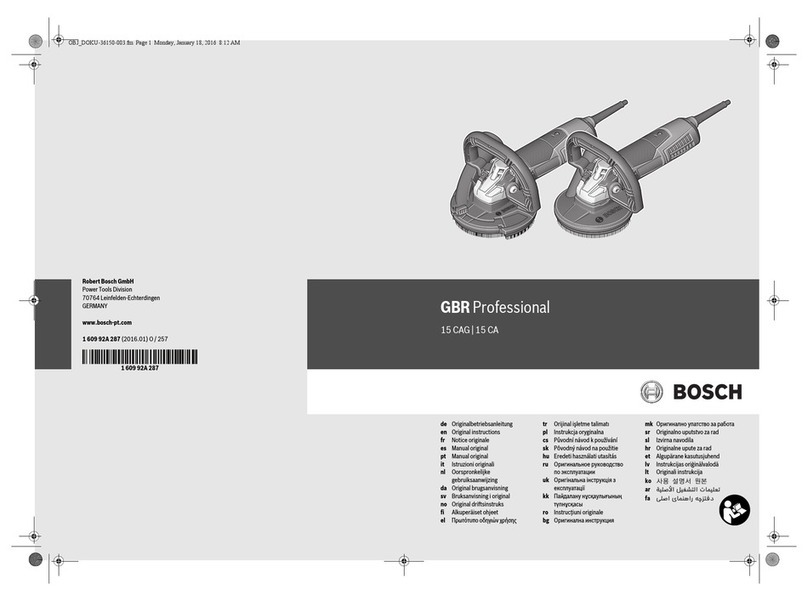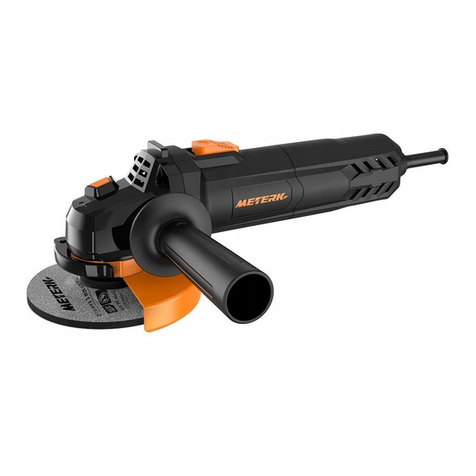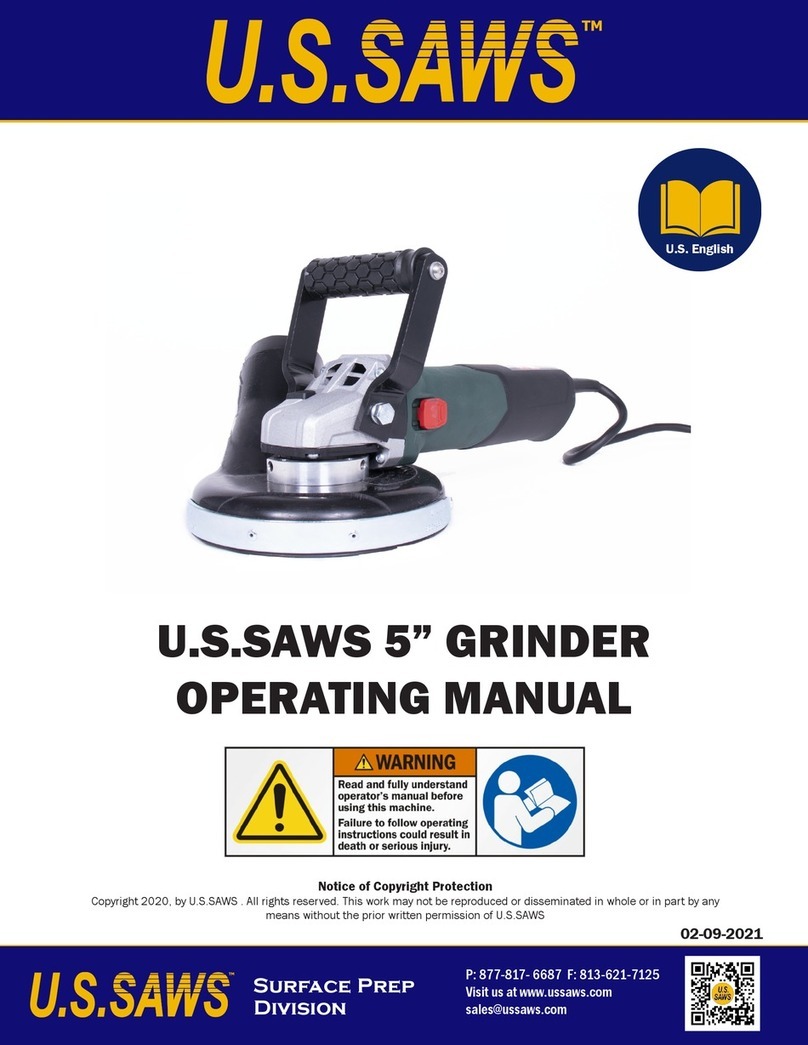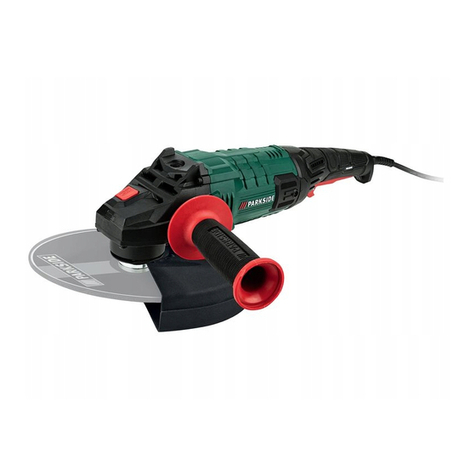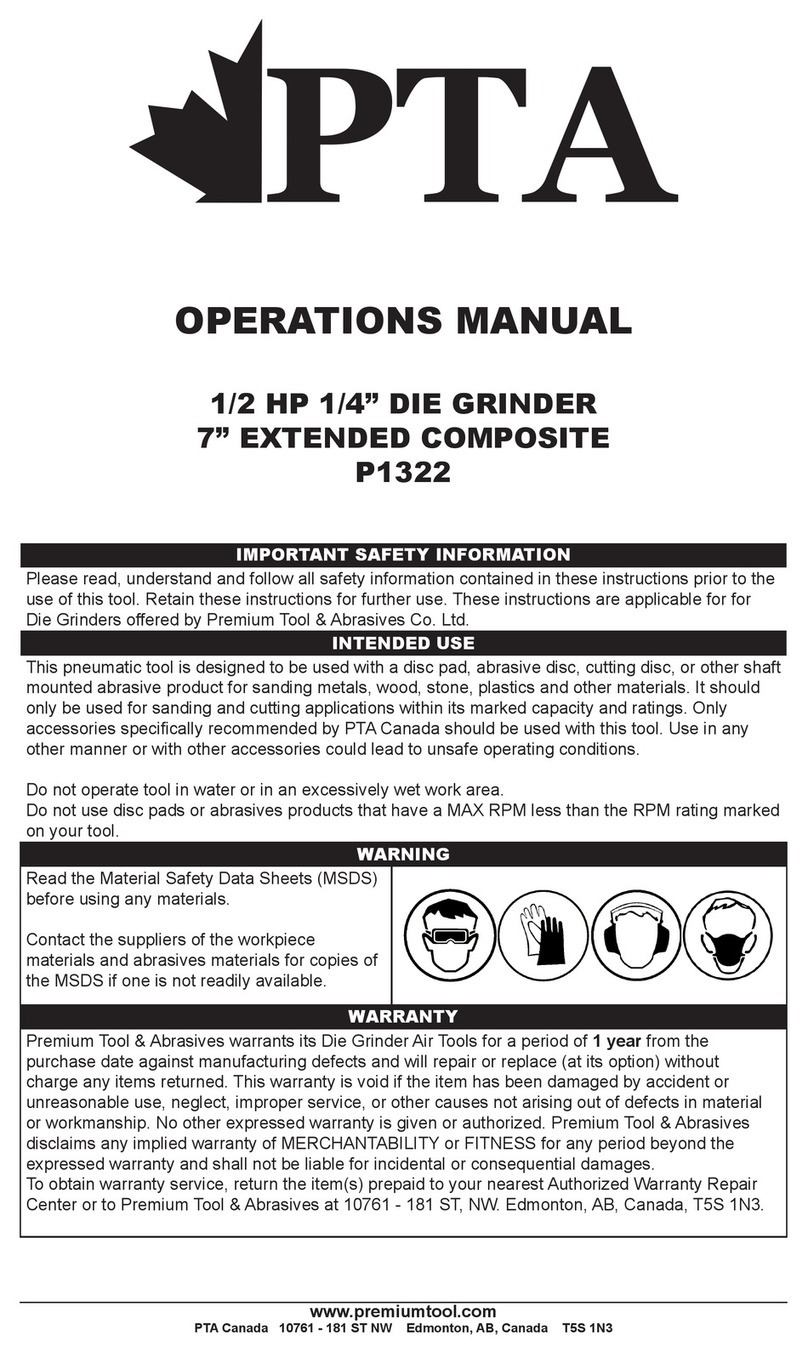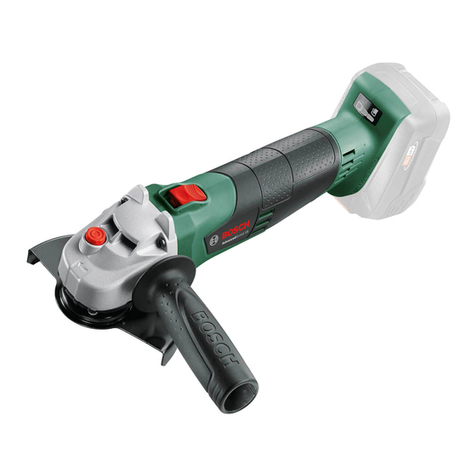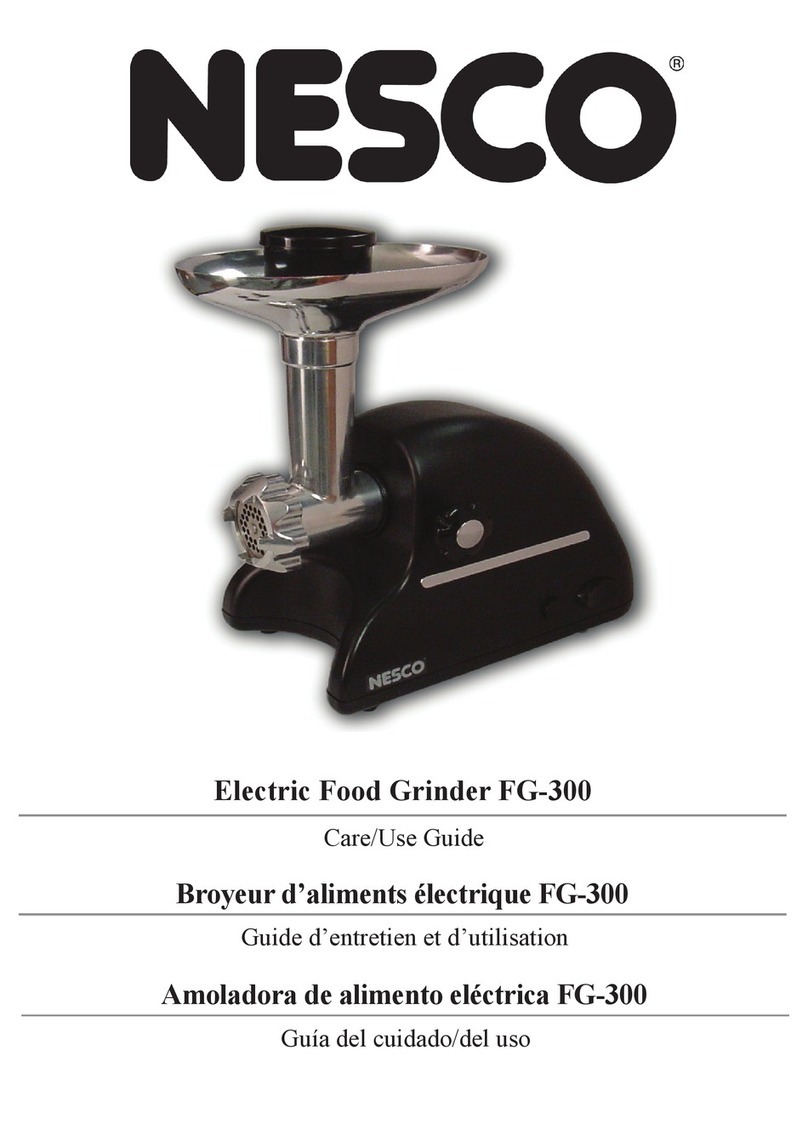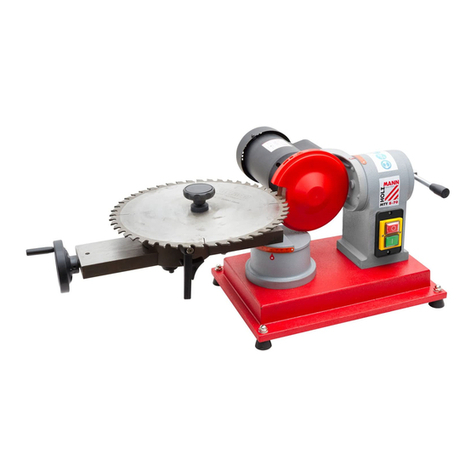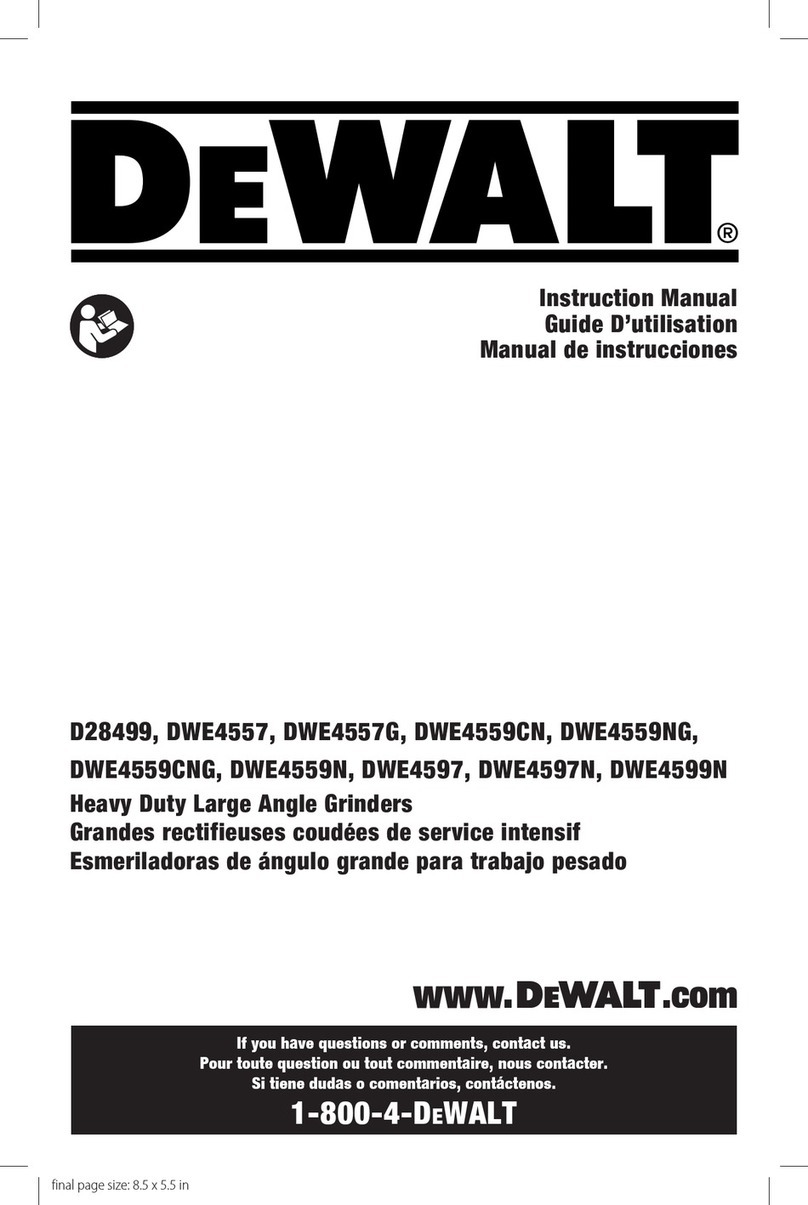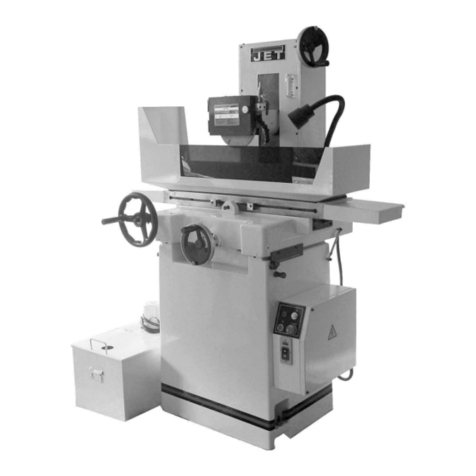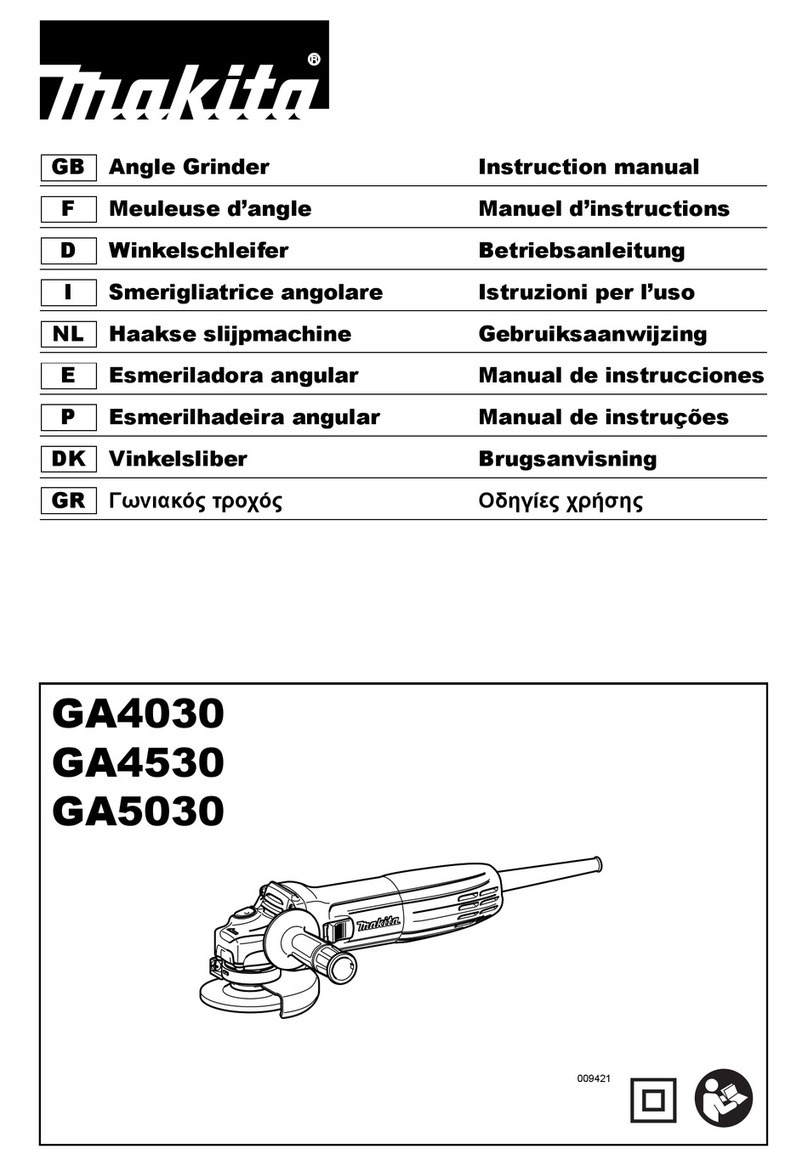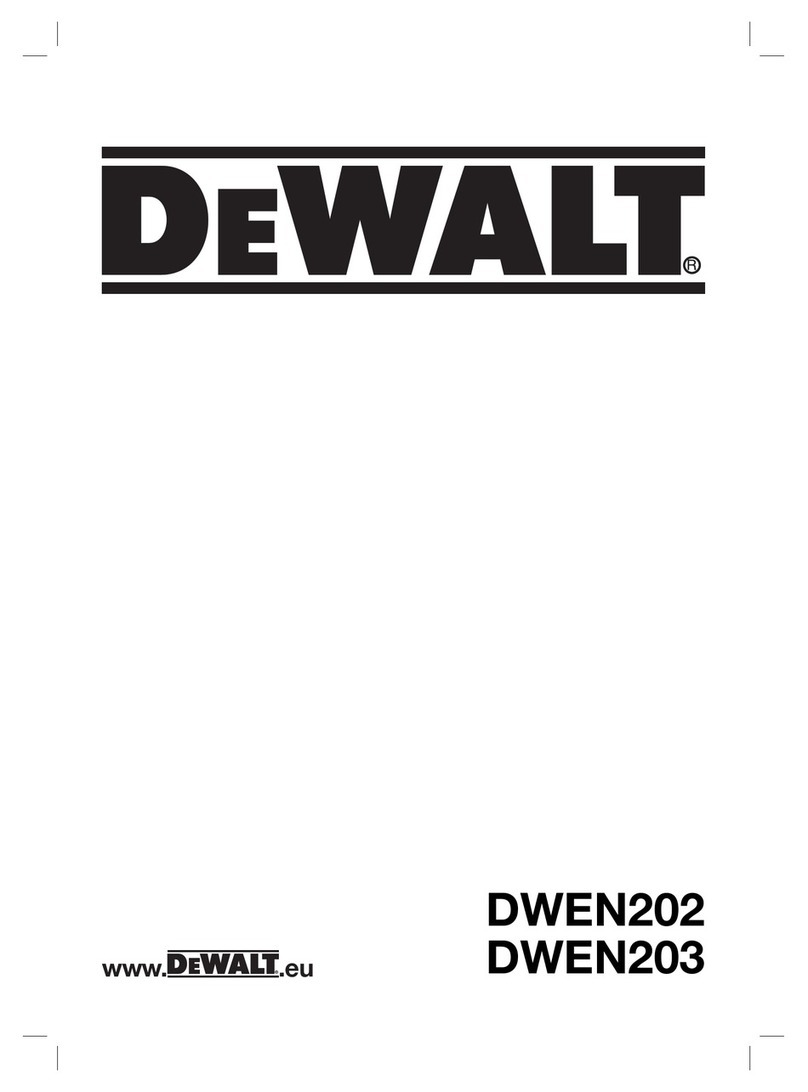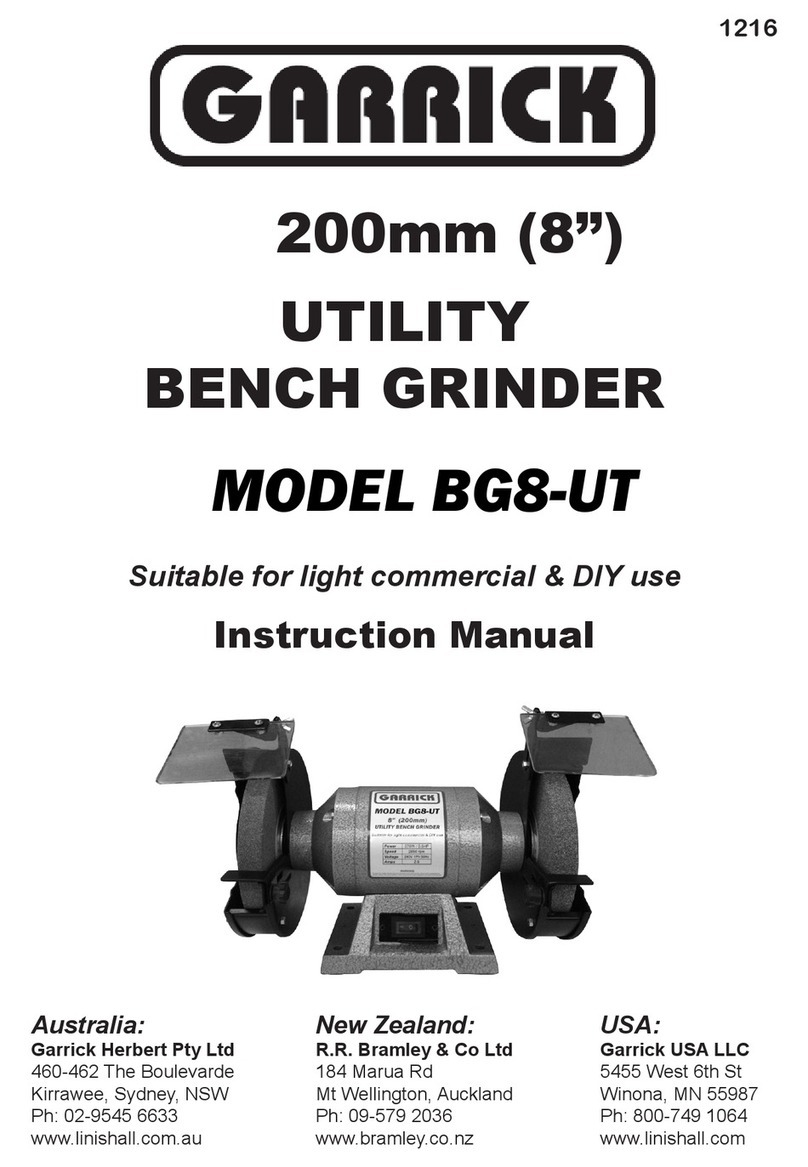
18 | English
curs, flush with water. If liquid contacts eyes, addi-
tionally seek medical help. Liquid ejected from the bat-
tery may cause irritation or burns.
Service
uHave your power tool serviced by a qualified repair
person using only identical replacement parts. This
will ensure that the safety of the power tool is maintained.
Safety information for the angle grinder
Safety Warnings common for Grinding, Sanding, Wire
Brushing or Abrasive Cutting Off operations
uThis power tool is intended to function as a grinder,
sander, wire brush or cut-off tool. Read all safety
warnings, instructions, illustrations and specifica-
tions provided with this power tool. Failure to follow all
instructions listed below may result in electric shock, fire
and/or serious injury.
uOperations such as polishing are not recommended to
be performed with this power tool. Operations for
which the power tool was not designed may create a haz-
ard and cause personal injury.
uDo not use accessories which are not specifically de-
signed and recommended by the tool manufacturer.
Just because the accessory can be attached to your
power tool, it does not assure safe operation.
uThe rated speed of the accessory must be at least
equal to the maximum speed marked on the power
tool. Accessories running faster than their rated speed
can break and fly apart.
uThe outside diameter and the thickness of your ac-
cessory must be within the capacity rating of your
power tool. Incorrectly sized accessories cannot be ad-
equately guarded or controlled.
uThreaded mounting of accessories must match the
grinder spindle thread. For accessories mounted by
flanges, the arbour hole of the accessory must fit the
locating diameter of the flange. Accessories that do not
match the mounting hardware of the power tool will run
out of balance, vibrate excessively and may cause loss of
control.
uDo not use a damaged accessory. Before each use in-
spect the accessory such as abrasive wheels for chips
and cracks, backing pad for cracks, tear or excess
wear, wire brush for loose or cracked wires. If power
tool or accessory is dropped, inspect for damage or in-
stall an undamaged accessory. After inspecting and
installing an accessory, position yourself and bystand-
ers away from the plane of the rotating accessory and
run the power tool at maximum no load speed for one
minute. Damaged accessories will normally break apart
during this test time.
uWear personal protective equipment. Depending on
application, use face shield, safety goggles or safety
glasses. As appropriate, wear dust mask, hearing pro-
tectors, gloves and workshop apron capable of stop-
ping small abrasive or workpiece fragments. The eye
protection must be capable of stopping flying debris gen-
erated by various operations . The dust mask or respir-
ator must be capable of filtrating particles generated by
your operation. Prolonged exposure to high intensity
noise may cause hearing loss.
uKeep bystanders a safe distance away from work area.
Anyone entering the work area must wear personal
protective equipment. Fragments of workpiece or of a
broken accessory may fly away and cause injury beyond
immediate area of operation.
uHold the power tool by insulated gripping surfaces
only, when performing an operation where the cutting
accessory may contact hidden wiring. Cutting access-
ory contacting a "live" wire may make exposed metal
parts of the power tool "live" and could give the operator
an electric shock.
uNever lay the power tool down until the accessory has
come to a complete stop. The spinning accessory may
grab the surface and pull the power tool out of your con-
trol.
uDo not run the power tool while carrying it at your
side. Accidental contact with the spinning accessory
could snag your clothing, pulling the accessory into your
body.
uRegularly clean the power tool’s air vents. The motor’s
fan will draw the dust inside the housing and excessive
accumulation of powdered metal may cause electrical
hazards.
uDo not operate the power tool near flammable materi-
als. Sparks could ignite these materials.
uDo not use accessories that require liquid coolants.
Using water or other liquid coolants may result in electro-
cution or shock.
Kickback and Related Warnings
Kickback is a sudden reaction to a pinched or snagged rotat-
ing wheel, backing pad, brush or any other accessory. Pinch-
ing or snagging causes rapid stalling of the rotating access-
ory which in turn causes the uncontrolled power tool to be
forced in the direction opposite of the accessory’s rotation
at the point of the binding.
For example, if an abrasive wheel is snagged or pinched by
the workpiece, the edge of the wheel that is entering into the
pinch point can dig into the surface of the material causing
the wheel to climb out or kick out. The wheel may either
jump toward or away from the operator, depending on direc-
tion of the wheel’s movement at the point of pinching. Abras-
ive wheels may also break under these conditions.
Kickback is the result of power tool misuse and/or incorrect
operating procedures or conditions and can be avoided by
taking proper precautions as given below.
uMaintain a firm grip on the power tool and position
your body and arm to allow you to resist kickback
forces. Always use auxiliary handle, if provided, for
maximum control over kickback or torque reaction
during start-up. The operator can control torque reac-
tions or kickback forces, if proper precautions are taken.
1 609 92A 51E | (29.07.2019) Bosch Power Tools
